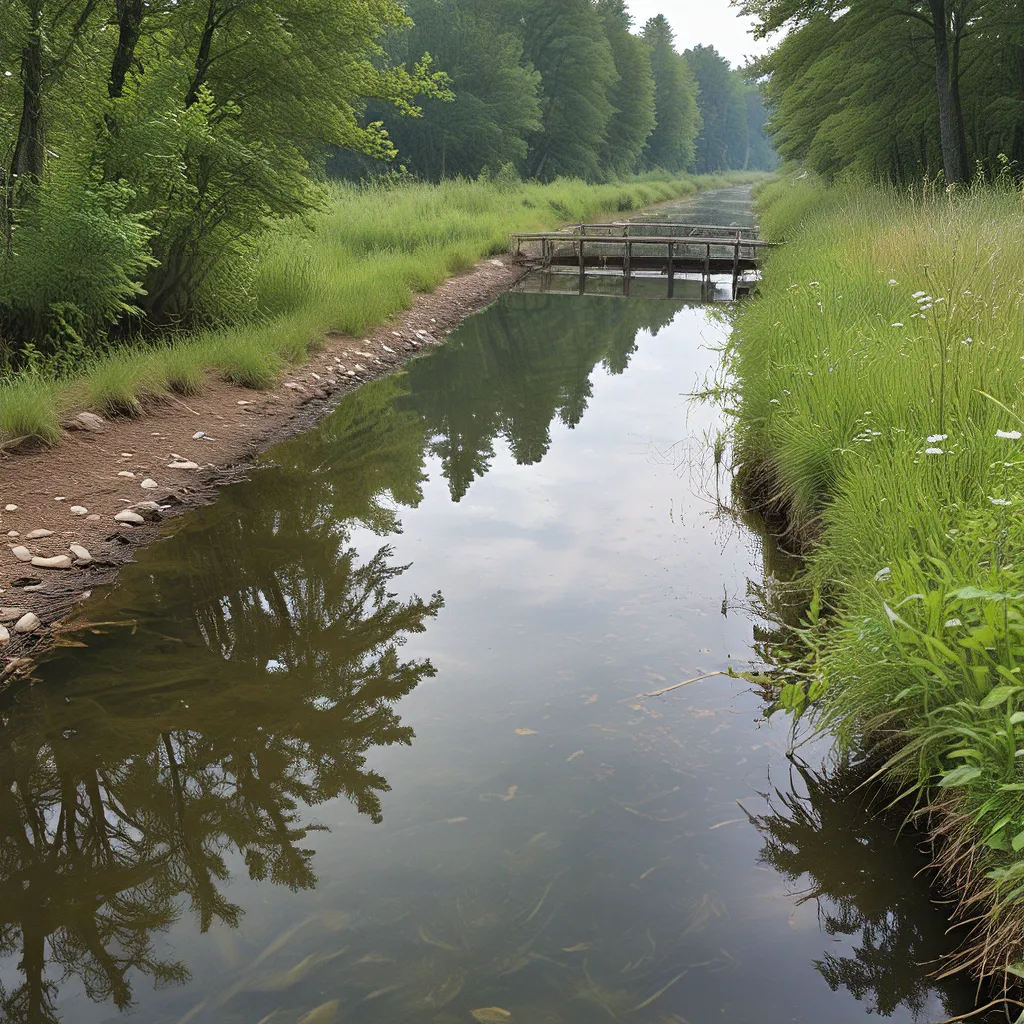
Rediscovering the Power of Nature in Wastewater Treatment
As I gaze out over the lush, verdant wetlands that flank our wastewater treatment plant, I can’t help but marvel at the ingenious way nature has provided us with a sustainable solution to one of our most pressing environmental challenges. Gone are the days of relying solely on energy-intensive, gray infrastructure to handle our wastewater – today, we’re embracing nature-based solutions (NBS) that not only clean our water, but also teem with vibrant life and enhance the overall well-being of our community.
It’s a remarkable transformation, really. Just a few years ago, this area was an uninspired expanse of concrete and pipes, more akin to an industrial facility than a place of natural beauty. But through a concerted effort to rethink our approach to wastewater management, we’ve been able to integrate aquatic ecosystems into our operations, harnessing the incredible power of nature to do the heavy lifting for us.
As the International Union for Conservation of Nature (IUCN) defines it, NBS are “actions to protect, sustainably manage, and restore natural or modified ecosystems, which address societal challenges effectively and adaptively, simultaneously providing human well-being and biodiversity benefits.” In the context of wastewater treatment, these solutions can take many forms – from constructed wetlands and wastewater treatment ponds to soil infiltration systems and green roofs.
Tapping into the Restorative Power of Aquatic Ecosystems
At the heart of this approach is a fundamental shift in how we view wastewater. Rather than seeing it as a problem to be disposed of, we’re recognizing it as a valuable resource that can be harnessed to support thriving aquatic ecosystems. By integrating these natural systems into our treatment processes, we’re not only able to remove contaminants like bacteria, heavy metals, and excessive nutrients, but we’re also revitalizing local habitats and enhancing biodiversity.
One of the most remarkable examples of this is our constructed wetland system. This carefully engineered ecosystem, designed to mimic the natural filtration processes of wetlands, has become a vibrant oasis in the heart of our community. As wastewater flows through the network of channels and pools, it is naturally filtered and purified by a diverse array of aquatic plants, microorganisms, and other organisms – all working together in perfect harmony to cleanse the water and support a thriving, resilient urban ecosystem.
But the benefits of this approach extend far beyond just water treatment. By restoring and protecting natural habitats, we’re also helping to mitigate the impacts of climate change, reduce urban heat island effects, and enhance the overall livability of our community. And as research continues to show, these nature-based solutions can be incredibly cost-effective compared to traditional, gray infrastructure approaches – a win-win for both the environment and our bottom line.
Overcoming Challenges and Unlocking the Potential of NBS
Of course, integrating aquatic ecosystems into our wastewater management system hasn’t been without its challenges. Utility managers and regulators often face a steep learning curve when it comes to understanding the complex mechanisms and requirements of these natural systems. And there can be a natural hesitation to step away from the familiar, highly controlled world of traditional wastewater treatment.
But as more and more communities like ours have discovered the power of NBS, the tide is turning. Water utilities and service providers are increasingly recognizing the immense value that these solutions can bring, not just in terms of environmental and economic benefits, but also in the realm of public engagement and community building.
By showcasing the beauty and vitality of these nature-based systems, we’ve been able to foster a deeper appreciation for the role of water in our everyday lives. Local residents flock to our constructed wetland to walk, birdwatch, and simply immerse themselves in the soothing presence of nature – a far cry from the utilitarian perception of wastewater treatment that many of us grew up with.
And as we continue to push the boundaries of what’s possible with NBS, the opportunities for innovation and collaboration only seem to grow. The International Water Association (IWA) and The Nature Conservancy (TNC) have teamed up to facilitate knowledge-sharing and support the development of practical guidance for water utilities looking to integrate these solutions into their operations.
Embracing the Future of Sustainable Wastewater Management
As I reflect on the journey that’s led us to this point, I can’t help but feel a sense of excitement and optimism for the future of wastewater treatment. By harnessing the power of nature, we’re not only cleaning our water more effectively and efficiently, but we’re also restoring the delicate balance of our aquatic ecosystems, enhancing the overall resilience of our community, and inspiring a new generation to appreciate the vital role that water plays in sustaining all life on our planet.
It’s a future that’s inspiring, innovative, and sustainable – one that I’m proud to be a part of, and one that I believe holds tremendous promise for communities around the world. So let’s continue to push the boundaries of what’s possible, to explore the frontiers of nature-based solutions, and to harness the incredible restorative power of our aquatic ecosystems. The future of wastewater management is ours to shape – and it’s a future that’s brighter than ever before.